Although it is one of the main urban centres in the country, George Town still has a number of village houses. Many of these are built of half-brick, meaning the bottom have is of brick pillars supporting a wooden self half. Standing beside modern townhouses, these wooden houses are remnants of what George Town used to look like a hundred years ago.
Most of the village houses in George Town predate the ubiquitous pre-war shophouses, most of which were introduced to the city from the second half of the 19th century. Much has been written about the evolution in architecture style of these shophouses (or townhouses, if they are used for residential purposes in their entirety). But much less study have been carried out on the village houses of George Town. They architectural style can be considered vernacular or Indo-Malay.
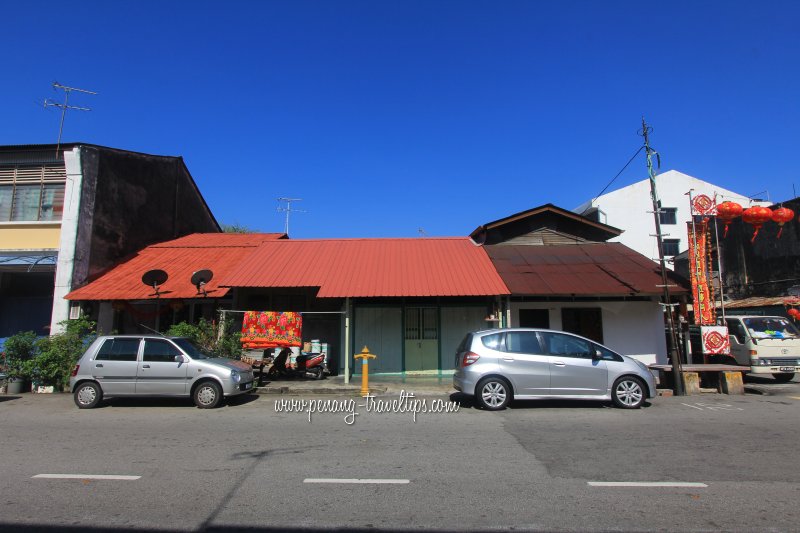 Chinese village houses, Seven Streets Precinct, George Town (6 February 2013)
Chinese village houses, Seven Streets Precinct, George Town (6 February 2013)
On this page, I am identifying the village houses that I have come across, particularly if they stand within an otherwise urban setting. I am numbering them on the map to make it easy for you to take a look at them yourself. Do be mindful that these houses remain private residential properties, so if you wish to enter them, please courteously seek permission for the occupants before doing so.
 Dato Kramat
Dato Kramat
One of the earliest Malay settlements on Penang Island, Dato Kramat is one of the places with "real" kampung houses. The whole Dato Kramat area can be further subdivided into small villages, such as Kampung Makam. These pockets are where rural George Town continue to exist. However, even here, urban development is right at the doorsteps of these village houses.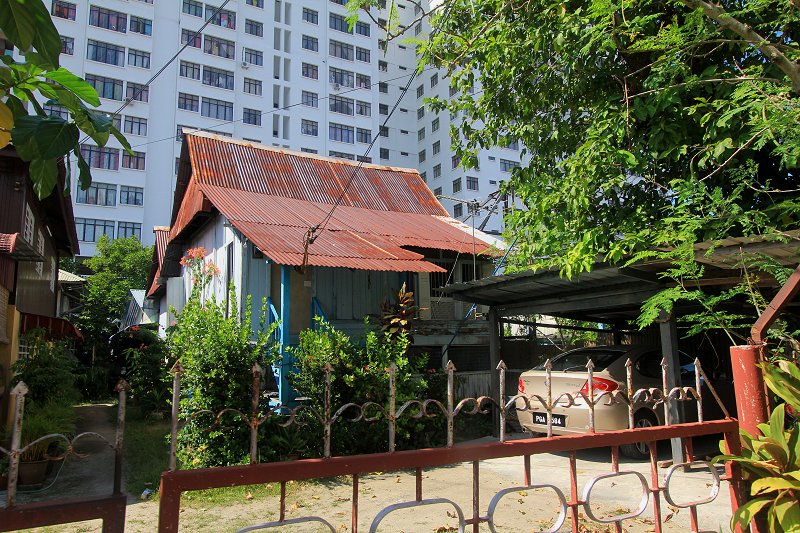 Kampung house in Dato Kramat, George Town (13 January 2014)
Kampung house in Dato Kramat, George Town (13 January 2014)
 Kampung Deli
Kampung Deli
Hemmed in between Macalister Lane, Burmah Road and Bertam Lane is a pocket Kampung Deli settlement. Further west, between Madras Lane and Jalan Zainul Abidin, is another cluster of Chinese-style village houses, or khu3kha3lau2, which I documented in a separate article on Rural Architecture in Urban Penang. Today there stands here a beautiful village house that has been remarkably well preserved.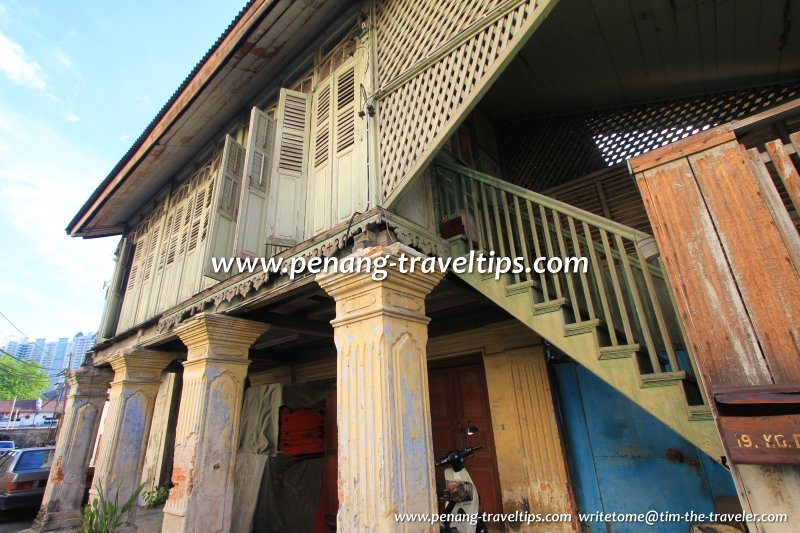 Beautiful village house of Kampung Deli (23 June 2011)
Beautiful village house of Kampung Deli (23 June 2011)
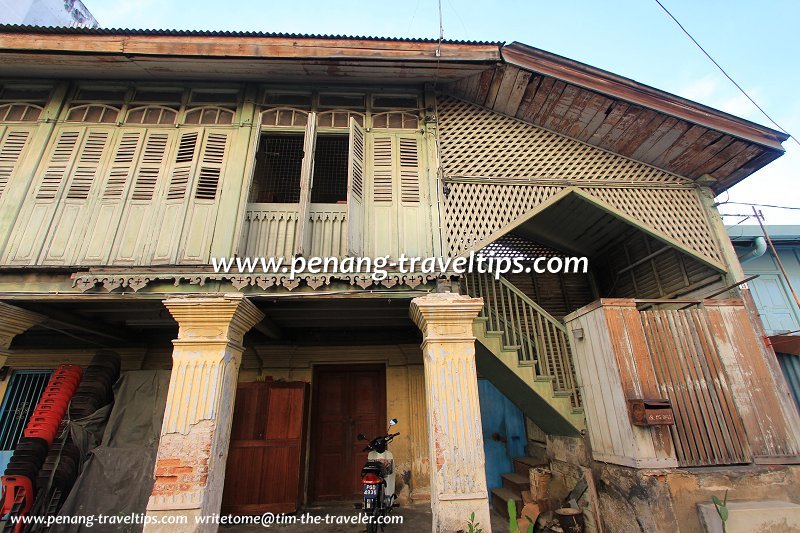 Kampung Deli village house (23 June 2011)
Kampung Deli village house (23 June 2011)
 Trishaw Men's Lodge, Burmah Road
Trishaw Men's Lodge, Burmah Road
One of the few with a name attached to it, the Trishaw Men's Lodge is a remnant of the past, exhibiting an architectural style of a different era. Trishaw Men's Lodge, Burmah Road (28 January 2013)
Trishaw Men's Lodge, Burmah Road (28 January 2013)
 Swatow Lane
Swatow Lane
A single detached house next to New World Park in Swatow Lane stands as a remnant of the rural architecture before the area urbanise. Village house in Swatow Lane (29 September 2012)
Village house in Swatow Lane (29 September 2012)
 Compound of Acheen Street Mosque
Compound of Acheen Street Mosque
Around the compound of the Acheen Street Mosque in Toh Aka Lane are a handful of village houses. Some of these have hipped roof. Their size and architectural style indicates that they were built by people of some means, probably merchants, rather than farmers or the working class. The fact that they are still standing today shows that there has ownership has passed down the generation over the century (or centuries).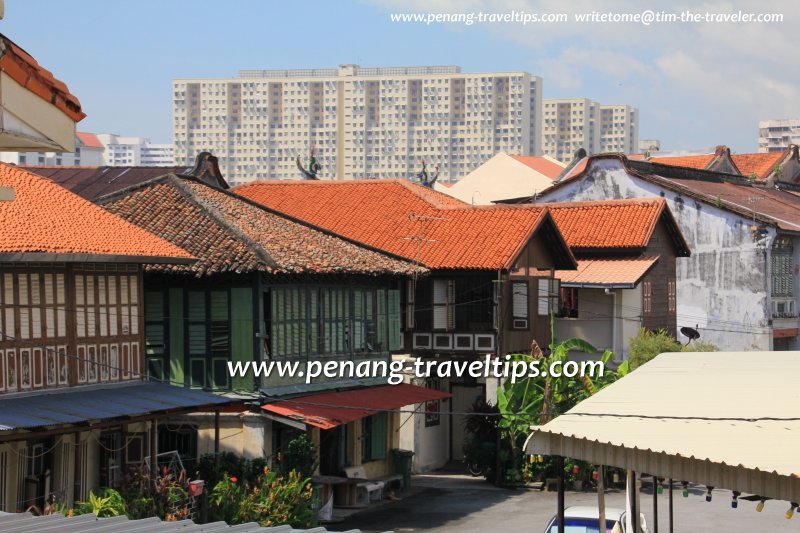 Indo-Malay bungalows in the compound of the Acheen Street Mosque (6 September 2012)
Indo-Malay bungalows in the compound of the Acheen Street Mosque (6 September 2012)
 Aboo Sittee Lane
Aboo Sittee Lane
Aboo Sittee Lane has quite a number of village houses, built when the area was semi-rural. They are still standing today in a remarkable state of preservation and are worth checking out.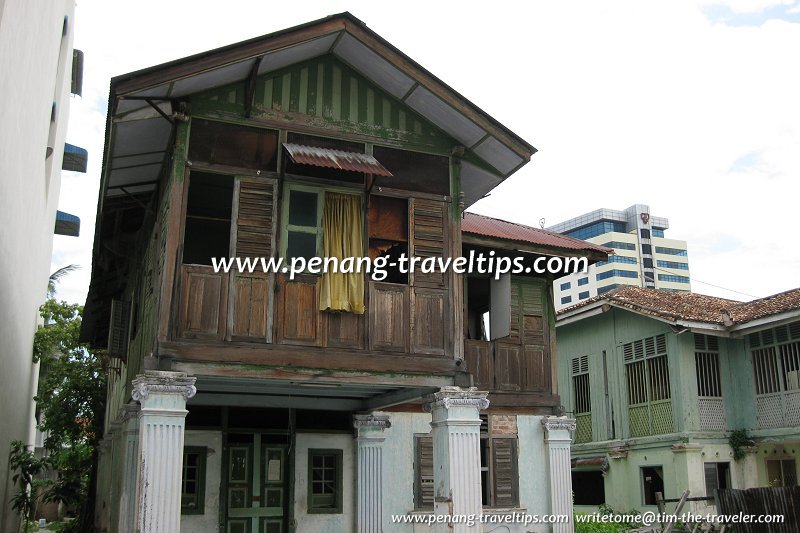 Village house in Aboo Sittee Lane (26 April 2009)
Village house in Aboo Sittee Lane (26 April 2009)
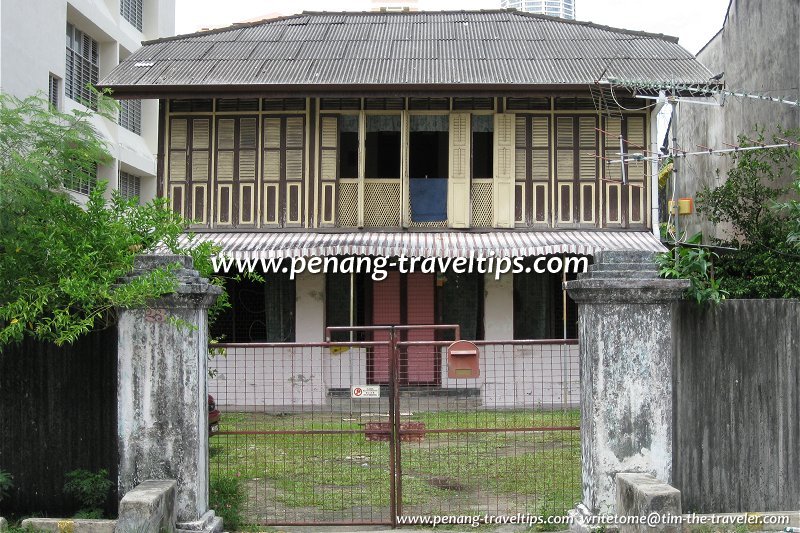 Village house in Aboo Sittee Lane (26 April 2009)
Village house in Aboo Sittee Lane (26 April 2009)
 Hutton Lane
Hutton Lane
This house on Hutton Lane has the lower half comprising brick pillars supporting a wooden upper floor. The asbestos roof may have replaced an original thatch roofing.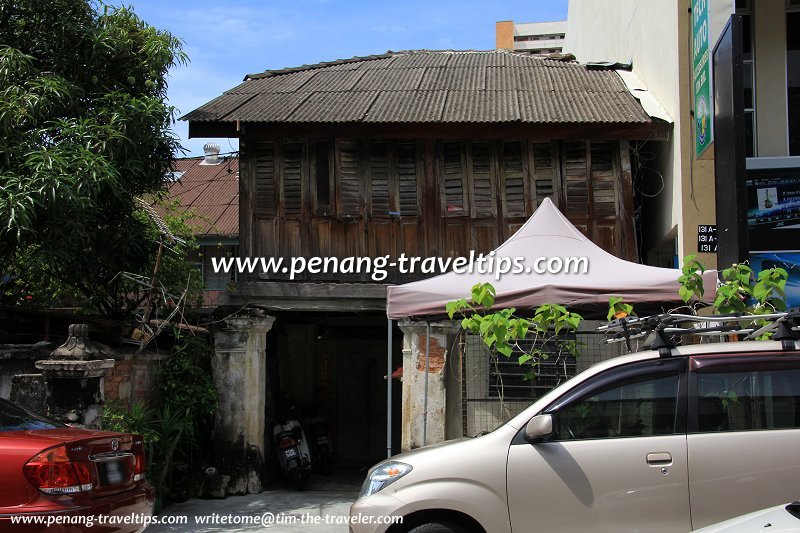 Hutton Lane village house (29 September 2012)
Hutton Lane village house (29 September 2012)
Related Topics
Closely related to the topic of village houses in George Town are the Indo-Malay bungalows and Anglo-Indian bungalows of George Town.Architectural Styles of Buildings in George Town

Copyright © 2003-2025 Timothy Tye. All Rights Reserved.

 Go Back
Go Back